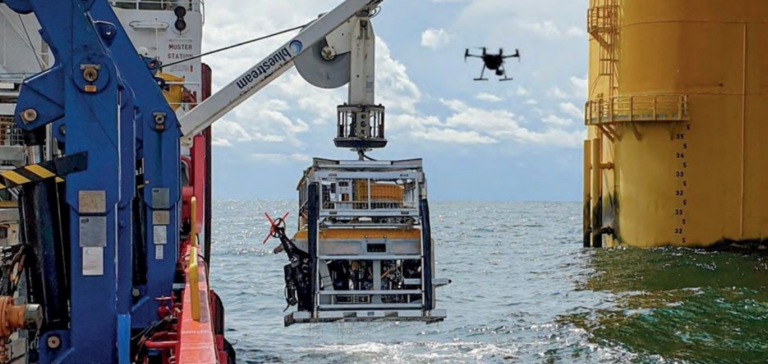In a significant move towards consolidating its presence in the marine renewable energy sector, OEG Energy Group Limited (“OEG”) recently formalized the acquisition of Bluestream Offshore B.V (“Bluestream”), a major player in subsea and surface services. This initiative is part of a series of targeted acquisitions by OEG, aimed at expanding its capabilities and capitalizing on emerging opportunities in marine renewable energy in Europe.
Strengthening OEG’s operational capabilities
The deal, whose financial details remain confidential, marks a strategic turning point for OEG. Bluestream, based in the Netherlands, is renowned for its technical expertise in providing specialized subsea services. With sales in excess of 55 million euros, generated by a team of 55 permanent employees and over 300 contract specialists, Bluestream stands out for its high level of expertise in diversified fields such as diving, the use of remotely operated vehicles (ROVs), work at height, rope access and the use of unmanned aerial vehicles (UAVs).
Bluestream: Expertise and Innovation in Underwater Services
Over the years, the company has built up a solid reputation, not least thanks to its R&D department, dedicated to the continuous improvement of its services. More recently, Bluestream has focused on developing innovative solutions for the fast-growing renewable energies sector.
Growth Ambitions and Market Opportunities for Marine Renewable Energies
For OEG, this acquisition represents a key step in its growth strategy. By integrating Bluestream, OEG not only increases its subsea and surface operational capacity, but also broadens its spectrum of action, enabling it to better meet the needs of a rapidly evolving marine renewable energy market. The deal is OEG’s fifth acquisition this year and the eleventh since OEG Renewables began expanding in 2020, underlining the company’s ambition to establish itself as a major market player and seize long-term opportunities in the sector.
Finalizing the Acquisition and Future Prospects
Following completion of this acquisition, scheduled for the end of the fourth quarter of 2023, subject to regulatory approvals, Bluestream will continue to operate as a separate brand within OEG Renewables. However, this will bring the number of skilled employees in the division to over 500. John Heiton, CEO of OEG, expresses his enthusiasm about the acquisition, calling it
“strategically complementary
and strengthen OEG’s service offering in the fast-growing European marine energy market. Bluestream CEO Rolf de Vries shares this enthusiasm. Indeed, it highlights the complementary values and commitment of Bluestream and OEG to the provision of high-quality services, while emphasizing the importance of health, safety and environmental protection.
OEG’s acquisition of Bluestream symbolizes a decisive step in OEG’s expansion strategy. By consolidating its presence in the marine renewable energies sector, OEG is positioning itself as a key player in the energy transition.






















